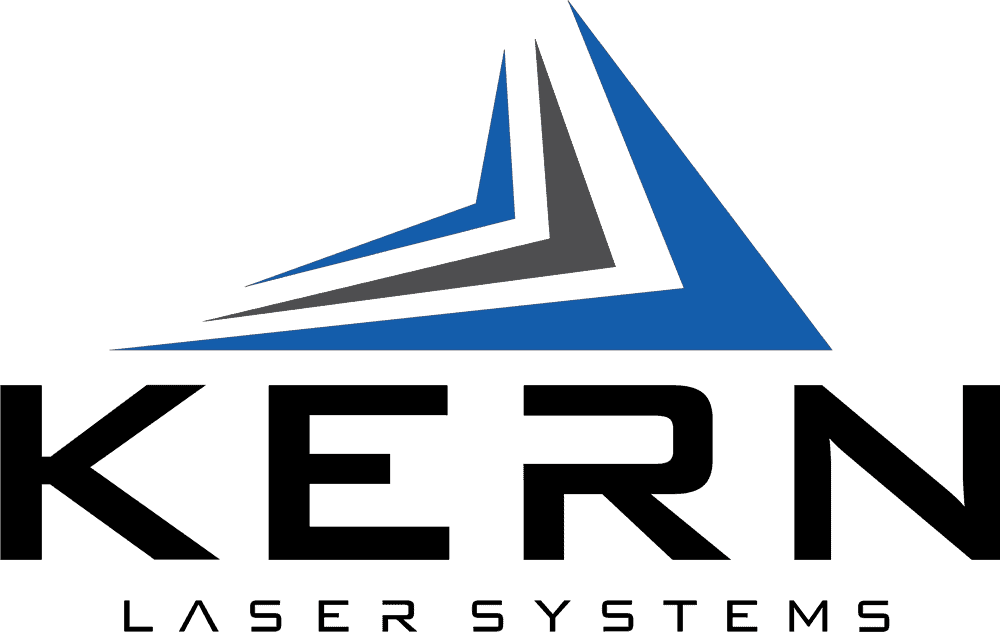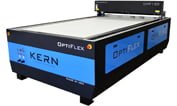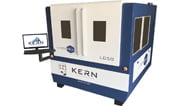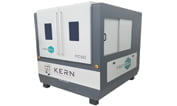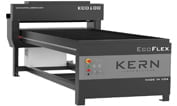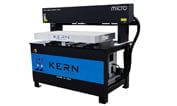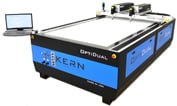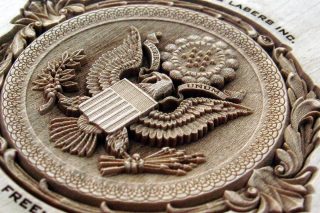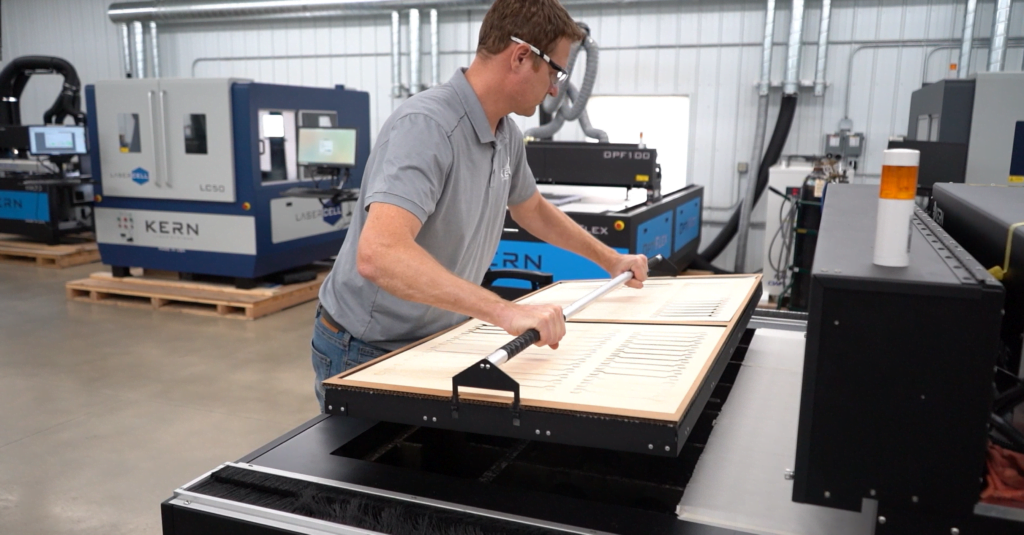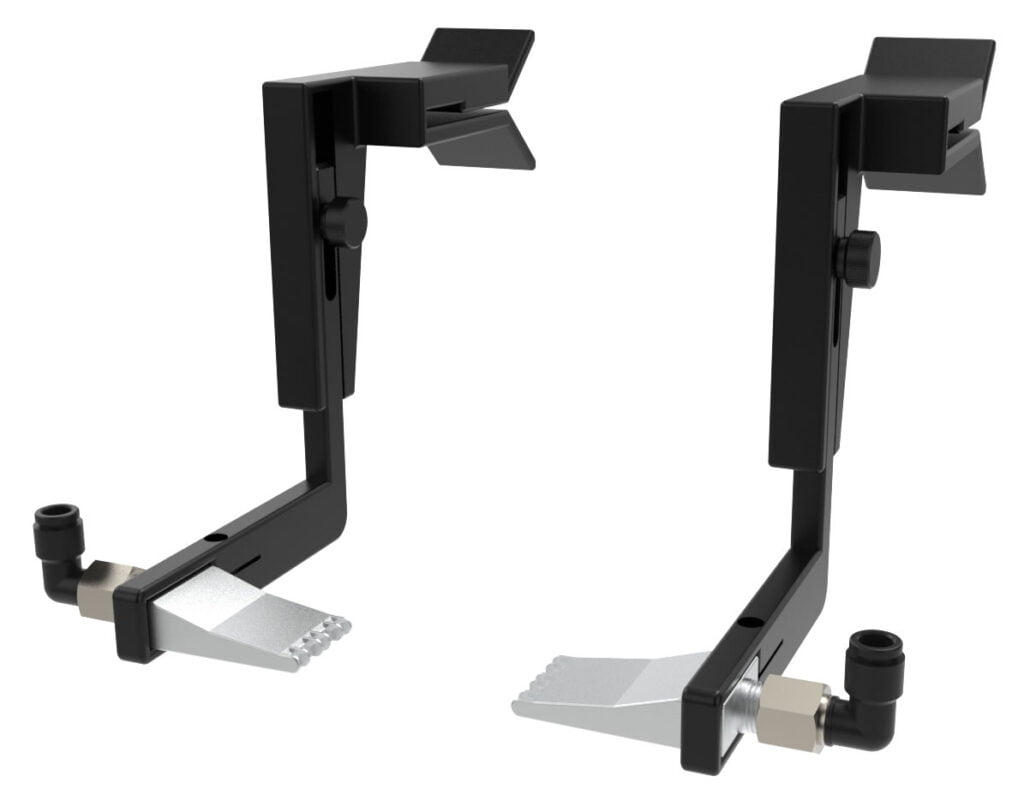There are three types of cores commonly available in the current CO2 laser market: metal, glass, and ceramic. At Kern, all of our laser systems have metal-sealed cores, which we consider to be the best, most proven design. Let’s compare some key aspects of these three common core types.
Glass Lasers
Many of the imported laser systems in the US market are installed with direct current (DC) glass tube lasers. Radio frequency-operated (RF) metal-sealed lasers (which we make) are generally superior to DC glass tube lasers by nearly any metric you could name. (DC and RF are different means of stimulating the gas mixture within the laser core to produce a beam.) The laser mode, profile, and beam specifications of glass tube lasers are all of lower quality, and they are not suited for high-quality engraving work because of their inferior pulsing capabilities including long rise and fall times.
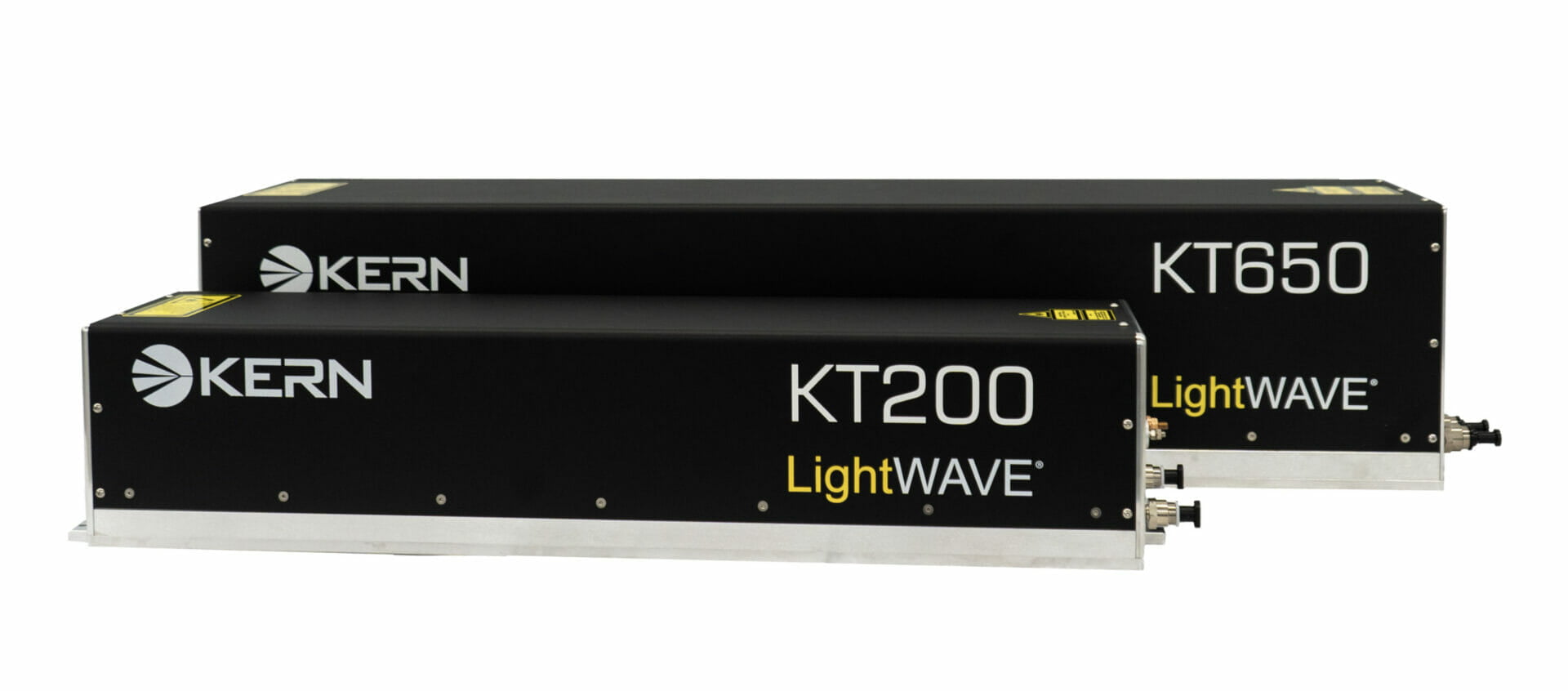 There is a narrow customer base for whom a glass tube laser might be the right choice: If you are buying your very first laser of any kind, and you only want to perform simple laser cutting tasks, the price differential between glass and metal core lasers may drive you to choose glass. Even in this situation, however, making the greater initial investment in a metal laser may turn out to be a better long-run decision, due to the lower incidence of failures and the much greater repairability of metal lasers over glass.
There is a narrow customer base for whom a glass tube laser might be the right choice: If you are buying your very first laser of any kind, and you only want to perform simple laser cutting tasks, the price differential between glass and metal core lasers may drive you to choose glass. Even in this situation, however, making the greater initial investment in a metal laser may turn out to be a better long-run decision, due to the lower incidence of failures and the much greater repairability of metal lasers over glass.
DC lasers are treated almost like lightbulbs. They are fragile, short-lived, and disposable. They generally come with a limited warranty lasting 12 months or less. Glass tube manufacturers will state a lifetime of ~10,000 hours but most will never reach that limit.
The unreliable nature of glass tube lasers can even extend to shipment: A glass tube laser is much more likely to arrive to the consumer somehow cracked or damaged compared to a metal laser. They are not durable. Metal-sealed lasers, by contrast, are the most proven technology on the market for high-performance CO2 lasers.
Glass tube laser output power scales directly with the length of the tube. A general power approximation for glass tube lasers is 100 watts per meter with around 150 watts commonly being the high end of power for a single glass tube laser. In order to have a glass tube laser with high wattage, you may need a laser with a tube that is many feet long. You might need a 5-6 foot long tube for a 150-watt laser. This makes it difficult for the user to upgrade their laser system because they can’t easily swap from one wattage to another without potentially needing to reconfigure their workspace or acquire a system built for a much larger glass tube core. This problem is compounded by relatively limited power control for glass lasers, which have a harder time operating at low power levels. So if you need to switch from cutting a dense material down to cutting paper, where low power is optimal, you may need two glass tube lasers to do so, one at high power and the other at lower power to provide an acceptable edge quality.
In contrast, customers can order any laser wattage we offer with most of our laser cutting and engraving systems. Even our high-powered lasers are capable of cutting through metal and kiss-cutting stickers with excellent quality.
Glass tube lasers can be an appropriate entry-level option for simple, small-scale laser cutting applications, but for everything else, a metal core laser will be the better option.
Ceramic Lasers
Ceramic cores are a less-proven technology with some claimed advantages over other core types. Unlike glass tube lasers, ceramic lasers are marketed to the same customer base as metal-sealed lasers, and they are marketed as a superior choice over metal-sealed lasers; however, evidence of any benefit for ceramic core lasers over metal core lasers is highly questionable. No advantage has been proven, and metal-sealed lasers remain the best choice for a reliable laser system based on performance metrics, not on marketing jargon.
Many claims made by ceramic laser manufacturers about the supposed disadvantages of metal-sealed lasers do not hold up to scrutiny. One such critique of metal-sealed lasers is the use of non-metal components like o-rings in the build of metal-sealed laser cores, suggesting these non-metal components are a point of potential failure for metal-sealed lasers. But focusing narrowly on these components misses the bigger picture: There are many parts in any type of laser build that could fail and need repair service or replacement. That includes components of the core, regardless of which type of core it is, and it extends to other components of the laser such as the electronics and optical components. Metal-sealed lasers are made not only with a long overall useful life in mind, but also with repair service in mind: Components can be easily replaced, and if your laser is under warranty, service would come at no cost to you. Ceramic lasers claim a long useful life, but they are more difficult to repair than metal lasers because their optics are often mounted directly to the laser core.
While the lifetime of a metal core laser can be extended through repair service, the same may not be the case for a ceramic core laser. Most problematically, many of the components singled out for critique by ceramic laser makers are present in ceramic core lasers as well, even if this is not emphasized in their marketing.
In comparison with a metal-sealed laser, another disadvantage of ceramic core lasers is their lower relative heat conductivity. Ceramic is ⅓ as heat-conductive as the aluminum we build our cores out of. A metal core conducts heat efficiently to maintain optimal temperature of the laser cavity and gas mixture it contains.
Evergreen Laser has published some information about their experience working with ceramic cores, and while they’ve found them more repairable than expected in some areas, they also note that, despite the ceramic construction method of fusing the two ceramic halves together at high temperature to create a “weldless” core, other elements of the build nullify this benefit and the laser cores can still leak.
“[T]he mirror holders and mirrors are epoxied onto the ceramic,” Evergreen writes. “Adjustments for the mirrors are done through o-rings. This, in our eyes, voids the hype of being a contaminant-free ceramic tube that will last forever.”
Metal Laser Advantages
There are physical and economic advantages to choosing a metal core laser.
Typically, manufacturers of metal-sealed lasers will build their lasers with a power margin of about 20 percent over the rated power of the laser because the output power of the laser will slowly decrease over time. This power margin helps ensure that the laser’s output remains above the rated output power level for the duration of the laser’s warranty and beyond. When you buy one of these lasers, you can expect a significantly higher output power than the rated power specified by the manufacturer when you receive the laser. This is again in contrast to ceramic core laser marketing, which offers minimal excess power and often inaccurately claims the output power of ceramic lasers does not drop over time.
On the topic of warranties, Kern is the only laser manufacturer on the market offering a standard three-year warranty on all our products. In answer to ceramic laser makers’ claims about their products’ long lifetimes, we would point out that there are half a million to a million metal-sealed lasers in service today globally, and we still have lasers running from 2013, when we first began manufacturing them.
Regarding physical advantages, metal-sealed lasers also allow for a much larger gas reservoir than the other types of laser core. The larger gas reservoir can allow the laser to be used for much longer periods of time before the gas reservoir needs to be refilled. The depletion of the reservoir in some of our lasers has been so slow that they have yet to need refill service even after many years of use.
At Kern, we believe that if you are serious about laser cutting and engraving work, a metal-sealed CO2 laser is going to be the best, most reliable option on the market.
